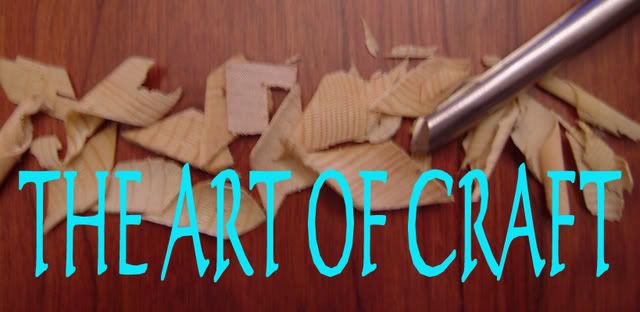This article picks up from Part 1 last week -
The garage here is a one and one half car garage. Not sure what half of a car it will fit, though. We did not really keep our van in there - it was too tall. And there was no point in keeping the little car in there though we tried at times. (blocked by the van on the driveway anyway). This would have to be a two part plan. To make the garage work we had to come up with more room for the cars, and, besides, we were tired of dealing with trying to back out to a four lane main street. We had a circular driveway installed. I don't like to mow grass anyway, so the lawn would not be missed. That took most of our finances for the moment and it took two more years to get to the next and most important phase of the two part plan - finish the garage. Convert it from a bug-invested garage with some beams that were rotting at the base to a nice, comfortable and usable workshop. I took a lot of time figuring out what I wanted. How many electrical outlets would be needed. What the lighting should be. How to keep the overhead storage and increase it if we could so that the Christmas ornaments still had a place to be and I could have storage for lumber. I knew of a contractor from work and called him in. No problem! I gave him the plans and all I had to do is sit back and watch it go up - "in less than two weeks!" Two weeks turned into two months. The man that he put in charge of the bulk of the job liked to work on his own schedule. There would be several days that he was expected that he was no where to be seen. Then he would come and put in a half day's work. The job was taking the entire summer and we had a road trip vacation planned at the end of the summer. "Go, don't worry - it will be all done when you get back." Reluctantly we went - and it was done when we got back but not exactly as we expected. Nothing major but there was some substitutions of the agreed upon garage door and such. After a few threats and some money taken off the final bill my workshop was complete.
I started right away moving my small woodworking machinery and tools up from the basement and into my "Shop". No longer would it be referred to as the "garage" but now it was the "Shop" or the "Workshop". "I am going out to the "SHOP"!", I would yell to my wife. Her answer was and still is, "Be CAREFUL!". She knows me well.
Of course, with a nice new and larger shop, those little machines would not longer do - but nothing was purchased until I purchased my lathe. It actually was a birthday present bought for me by my wife. It had to be ordered by the store and when it was time to pick it up with had them put it into our van and wondered how we would lift it when we got it home. We ingeniously devised a collection of tables that stretched from the van to inside the shop - through the garage door that we knew should remain as part of the structure. The tables led all of the way to the lathe stand that was purchased at the same time. I assembled the stand and we got the lathe up onto the first table by pushing and then pushed all of the way inside to where it would come to rest. Of course, as so many things go, when we opened the carton to start to get the lathe out we found that the cast iron base was cracked! We closed the box and started pushing in the opposite direction. My heart in my throat - as I come THIS close to having my lathe. We called the store and told them to expect us back immediately and they better order another lathe right away. Happily they said that they just happened to have another (?) and we should come and exchange it. Which we did. Of course, now we had to push the new carton out of the van, onto the tables, and over to the stand. Finally, it was there - in my shop!
I will not go into the learning process now, but with the help of some books and videos I discovered that I was a natural on the lathe and was producing nice pieces rather quickly. When you have a lathe, you learn that you really need some large and powerful machinery to go along with it to make the best use of it - along with the specific collection of gouges and chisels that you need to "do it right".
It will probably not surprise you that my workshop is now full to the brim with machinery and tools. There is no place really to put anything else and what is there is all on wheels so that it can be moved into the center of the garage, pardon me, shop to work with. I love that shop.
What we had not figured on when we had the shop built was climate conrol - not for what is inside, but for me. It gets to be over 90 degrees F in the summer and down to 2o degrees F in the winter. There are about three months in parts total through the year that one can actually go into the shop and work comfortably. The summer months have been handled with the addition of a through the wall air conditioner which to the surprise of the installer was the first that he ever installed in a garage. Heat in the winter is not so easy. I tried a lot of different types of space heaters - a radiant heat dish that looks like a satellite antenna that did nothing but make my legs warm and an electric oil filled radiator that did little to fend off the freezing cold inside the shop. I eventually found a radiant heater that attaches to the ceiling that gives off a nice heat if it is pointed in your general direction. Two of these, each placed at different sides of the shop pointed to the spots that I work the most do the job as long as it is not TOO cold outside. Having never figured on these, if two tools and a heater are turned on at the same time - the fuse blows. Only a problem when I want to run the dust vacuum while I am working. And of course, don't put both heaters on at the same time if there is any tool running because that puts me in the dark too.
But I love my shop. And this winter it has been too cold for those heaters to keep up. And the snow piled high from the the house to shop door does not help either. I have not been in the shop for any significant time now since November. I tried one day in February when I needed to make a
lucet for Etsy - just having sold a walnut one with none to replace it. It was sold cold that I could not feel my finger going too close to the sanding machine and caught the edge. Nothing serious but annoying- and once my fingers thawed from the cold I could really feel those two little cuts!
Ah, but the Spring is almost upon us and soon I will be able to go inside my shop again. I will be able to clean up and re-organize my shop again. In the cold it has been leave all behind and get back into the house quick. A big mess results that way -which is waiting for me to put it back the way it was and is supposed to be. And maybe, just maybe I will be able to start working on those projects that I have been thinking of doing as I have watched the nasty weather come down all winter.














